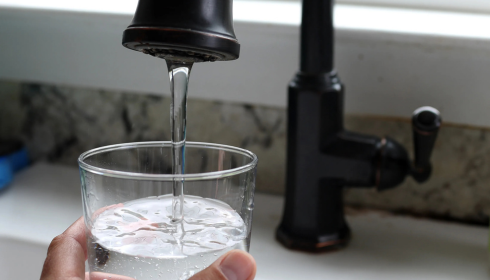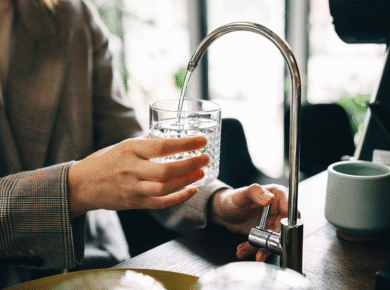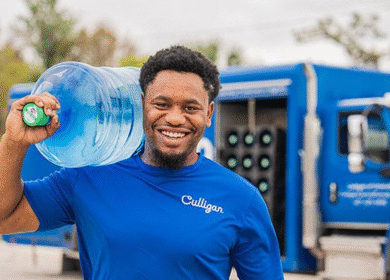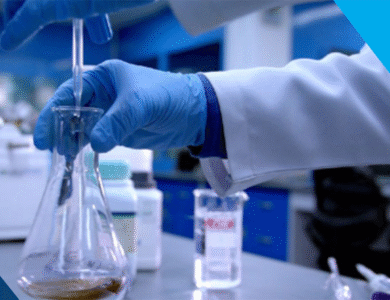Clean Water, Clear Mind: Understanding PFAS and How to Filter Them Out of Your Home

Walk into any kitchen, pour a glass of water from the tap, and you’d like to think it’s safe. Clear, cold, refreshing—what more could you ask for? Yet in recent years, unsettling reports have surfaced about chemicals lurking invisibly in that same glass. PFAS, often dubbed “forever chemicals,” have become a household concern for many families. If you’ve found yourself Googling ways to make sure your water is clean, you’re not alone. The conversation about these chemicals isn’t just happening in science journals anymore; it’s being discussed around dinner tables, neighborhood meetings, and even school drop-off lines.
What Are PFAS, and Why the Buzz?
PFAS stands for per- and polyfluoroalkyl substances. If that sounds like chemistry class flashbacks, don’t worry—you’re not expected to memorize the tongue-twisting names. What matters is this: they’re man-made chemicals that resist breaking down. That means once they’re created and released, they linger. In water, in soil, in wildlife, and yes—inside human bodies.
These chemicals were initially celebrated for their magical ability to repel water and grease. Think non-stick pans, water-resistant jackets, stain-proof carpets. Handy, right? The problem is they don’t stay neatly tucked away in those products. Over time, PFAS seep into groundwater and, inevitably, our taps.
The Health Risks That Make People Nervous
Here’s the kicker: PFAS don’t just pass through the body like excess vitamins or minerals. They build up. Studies suggest potential links to thyroid issues, certain cancers, developmental delays in children, and weakened immune systems. That’s heavy stuff, and it’s exactly why awareness has exploded in recent years.
Nobody wants to serve their kid a glass of water with an invisible chemical cocktail inside. And yet, for millions of households, that’s the current reality. Which brings us to the big question: how do you tackle it?
Filters to the Rescue (But Not All Are Equal)
When you walk down the aisle at a home improvement store, the shelves are lined with water filters. Pitchers, under-sink units, fridge filters, whole-house systems. They all promise cleaner water, but here’s where it gets tricky: not every filter is designed to catch PFAS.
A basic carbon pitcher filter might reduce chlorine taste, sure, but it’s often useless against tougher contaminants. If PFAS are your concern, you need a system specifically rated to deal with them. Many households are now searching for a pfoa and pfas water filter because general-purpose filters simply don’t cut it. It’s like using a flimsy umbrella in a storm—it works for a drizzle, but you’ll be soaked when it really matters.
Technologies That Actually Work
So, which technologies stand up to the challenge? The two big players are:
- Activated Carbon (Granular or Block): These filters are highly porous, meaning they can trap a wide variety of contaminants. They’re particularly good at reducing longer-chain PFAS compounds.
- Reverse Osmosis (RO): This system forces water through a semi-permeable membrane, leaving contaminants behind. RO tends to be more effective for smaller-chain PFAS that carbon sometimes misses.
Some of the most effective systems combine both methods—carbon to catch one type, RO to block the other. It’s a layered defense strategy, not unlike having both a lock and an alarm system on your home.
Choosing the Right Option for Your Family
The decision often comes down to your household’s needs. A large family with multiple bathrooms might lean toward a whole-house system. An apartment dweller might find an under-sink RO unit more practical. And of course, cost plays a role. High-quality systems aren’t cheap, but when the trade-off is your long-term health, most people find the peace of mind well worth it.
Independent testing and certification matter too. Look for NSF or third-party verified results instead of trusting slick marketing slogans. This ensures that when a product says it reduces PFAS, it’s not just a hollow claim.
For many consumers, the safest bet is investing in the best water filter for pfas removal rather than rolling the dice on a generic system. It’s about narrowing down to the units that have proven performance, not just promises.
Everyday Habits That Complement Filtration
Filtration is the big-ticket solution, but there are small habits that can help reduce overall PFAS exposure too. For example:
- Avoid non-stick cookware unless it’s clearly PFAS-free.
- Cut back on fast food packaging, which often contains grease-resistant PFAS coatings.
- Skip stain-resistant sprays and waterproofing treatments unless verified safe.
Think of these as backup moves—helpful, but not a substitute for safe water. The truth is, water is the primary pathway of exposure for most households, so filtration deserves the spotlight.
The Emotional Side of Water Safety
It’s not just about science. There’s an emotional weight to this conversation. Parents worry every time they pour a bottle for their toddler. College students wonder if their dorm water is safe. Grandparents reflect on decades of drinking tap water and ask, “What’s been building up inside me all these years?”
This isn’t paranoia—it’s a reasonable concern. After all, trust in tap water has always been a fragile thing. Lead crises, boil advisories, contamination scares… communities know the sting of finding out their water isn’t as safe as they thought. PFAS are simply the latest headline in a long saga.
Can We Eliminate PFAS Altogether?
Short answer: not easily, not quickly. PFAS are so persistent that cleanup takes serious effort and resources. Municipal treatment plants are upgrading, but progress is slow. That’s why individual action—investing in home filtration—remains the most immediate solution.
It’s empowering to know you can take steps today to remove pfas from drinking water even while broader infrastructure improvements lag behind. Nobody likes waiting on slow policy wheels to turn when the health of your family is at stake.
Looking Ahead: A Future With Cleaner Water?
The hopeful side of the story is this: awareness leads to change. Ten years ago, barely anyone outside of niche science circles had heard of PFAS. Now, companies are reformulating products, governments are tightening regulations, and consumers are demanding better safeguards. It’s not instant, but it’s progress.
Imagine a decade from now—PFAS-free cookware as the norm, better municipal treatment systems, and families sipping water without hesitation. That’s the direction we’re heading, as long as awareness keeps growing and pressure for safer systems continues.
Final Thoughts
At the end of the day, water is life. We don’t just drink it; we cook with it, bathe in it, make coffee with it every morning. The presence of PFAS challenges our sense of security, but it doesn’t have to leave us helpless. Practical solutions are here, from high-quality filtration systems to mindful consumer choices.
So, the next time you fill a glass, you’ll know the story behind those invisible “forever chemicals”—and, more importantly, the steps you can take to keep them out. Clean water isn’t just a luxury; it’s a necessity. And protecting it means protecting everything from our health to our peace of mind.



